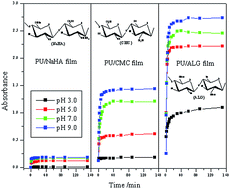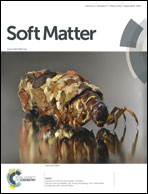The effect of polysaccharide types on adsorption properties of LbL assembled multilayer films
Abstract
Three types of biocompatible films were fabricated via electrostatic layer-by-layer (LbL) adsorption of oppositely charged cationic polyurethane and anionic polysaccharides with different primary structures, including sodium hyaluronate, sodium carboxymethyl cellulose and sodium alginate. The adsorption behaviors of films were investigated by using the cationic dye methylene blue (MB) as a model drug at various pH values and salt concentrations. The relationship between the type of polysaccharide and the adsorption behavior of LbL films was comparatively studied. It was found that the adsorption capacity increased with an increase of the initial concentration of MB in the concentration range of the experiment to all of the films, and the pH of environment ranged from 3.0 to 9.0. The Langmuir equation fit perfectly to the experiment data. In addition, a pseudo second-order adsorption model can well describe the adsorption behaviors of MB for three films. The results showed that the type of side chains and the charge density of the polysaccharides played key roles in the adsorption properties of the PU/polysaccharide multilayer films.


 Please wait while we load your content...
Please wait while we load your content...